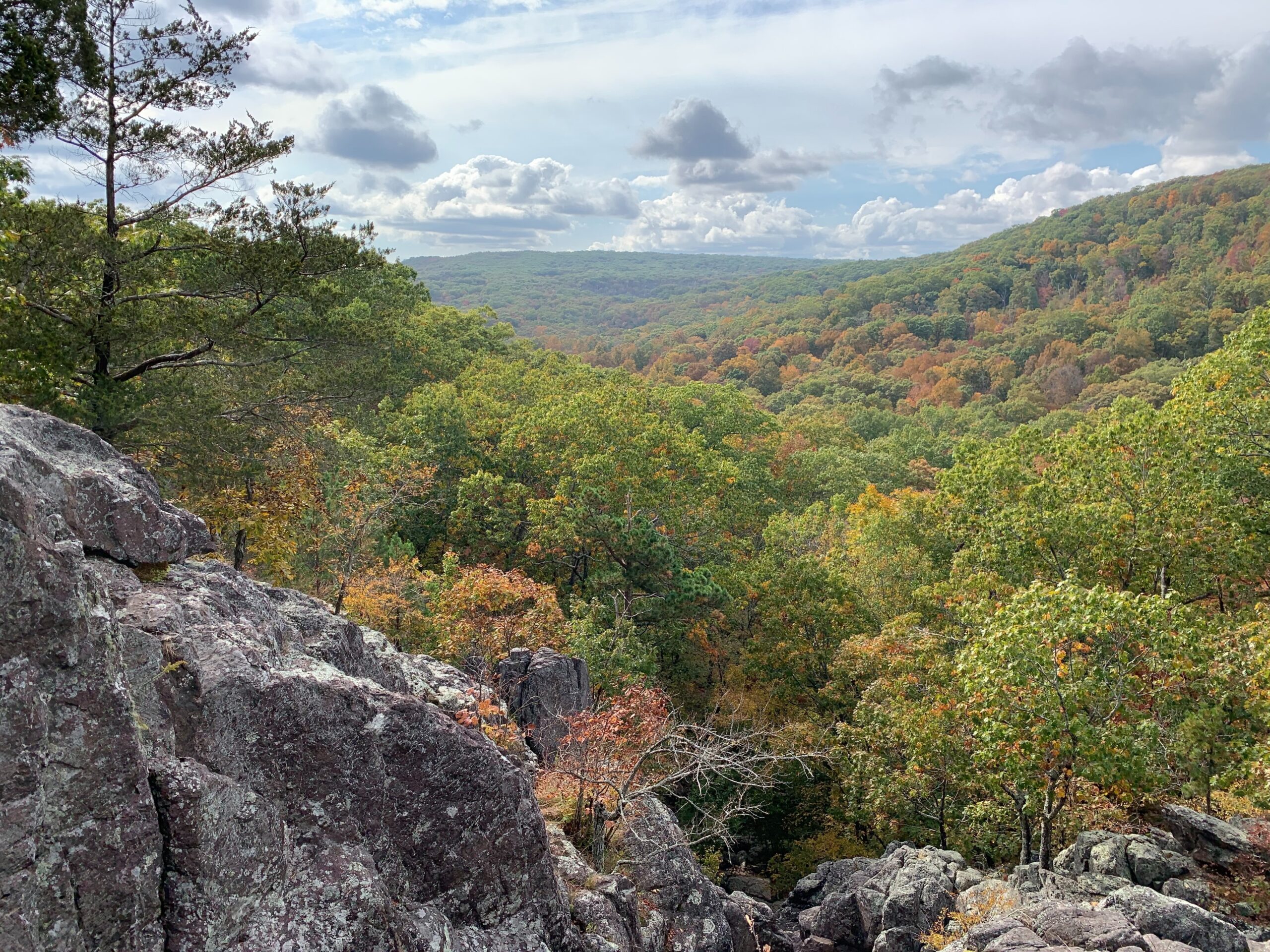
On March 8, 2023, the Missouri Highway and Transportation Commission officially designated the Ozark Run Scenic Byway, the state’s first officially designated byway in nearly twenty years. Stretching from Iron County to Washington County, Missouri, the Ozark Run is a 78-mile contiguous route through the Ozark Mountains.
“The Ozarks are not a very well-publicized place,” said Eric Hermanson, a St. Louis resident and self-described map and travel enthusiast. “That’s where the idea came from, and that’s what the Ozark Run is all about. We want people to define and discover Missouri in ways they never have before.”
Define and Discover the Ozarks has become the unofficial tagline of the byway. “People don’t like venturing away from the interstate unless they know there’s something to see out there. The scenic byways are an itinerary to bring people to something they need to see,” said Hermanson.
The process began long before the state officially recognized the Ozark Run as a scenic byway. In January 2020, while curiously looking over a map of the Midwest United States, Hermanson had one goal: “How do I get from one corner of the Ozarks to the other, while sticking to the scenic two-lane roads, and avoiding the major highways?” Hermanson wondered aloud while recalling the project’s origins.
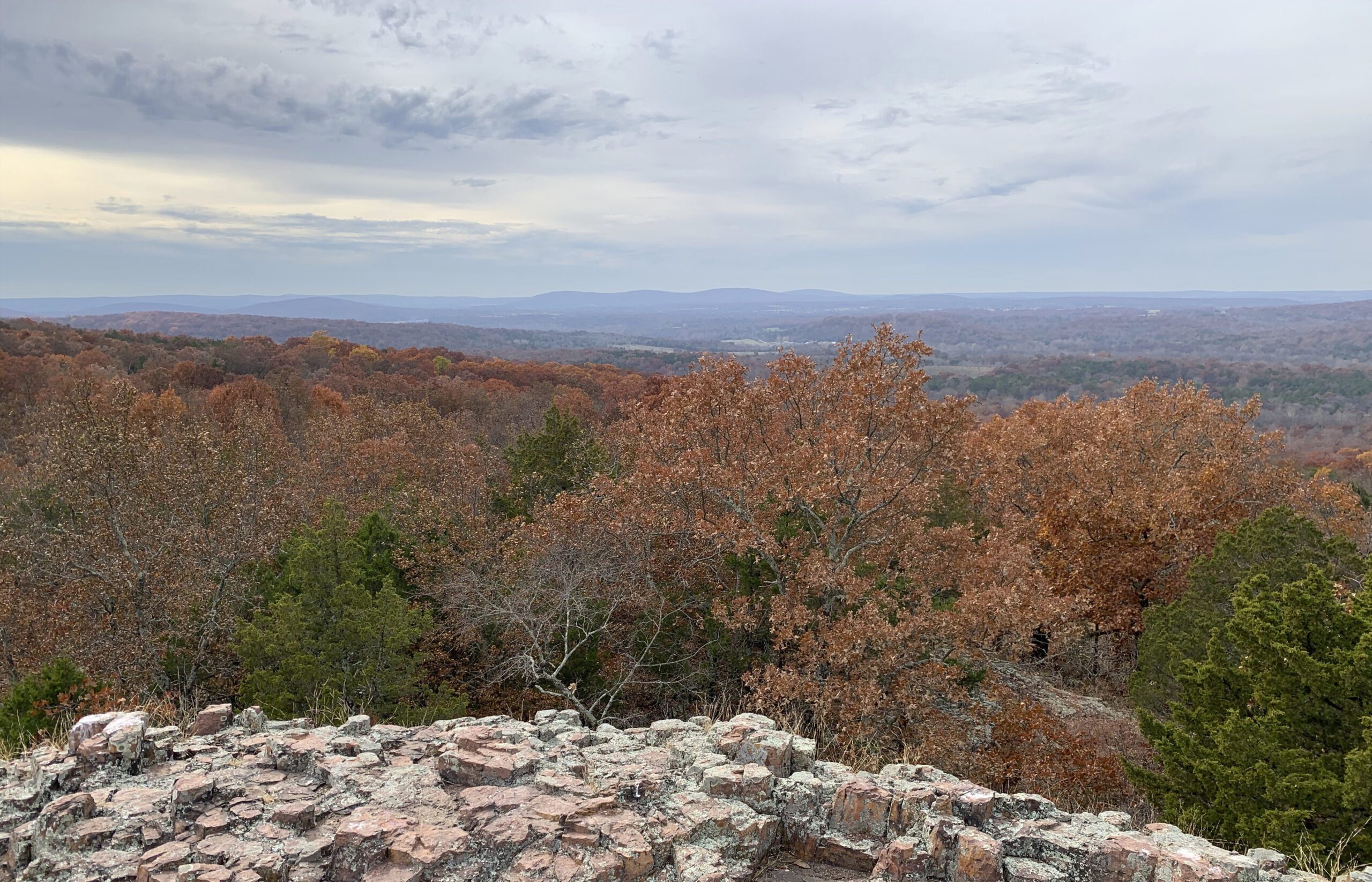
Where many other mappers and travelers would simply plot a route and take a drive, snapping photos and committing the experience to memory, Hermanson took his vision several very large steps further. Having driven through the Ozarks many times, Eric wasn’t simply trying to find his way through. He wanted to find the right way through.
“I sat down with a map and just came up with it, a route that traverses the entirety of the Ozark uplift, from Missouri, to Arkansas, to Oklahoma.” Thus, the concept was born.
The Ozark Run: An officially-recognized state scenic byway, snaking through billion-year-old granite mountains, past an old French-colonial town, two beautiful lakes among rolling green hills, and other unique vistas and experiences which would otherwise be lost to the everyday traveler.
“I had always seen signs for the Great River Road along the Mississippi River, and the Lewis and Clark Trail, and I thought there should be something like that for this route through the Ozarks. Something official that people could follow.”
It was through the process of making things official that Hermanson connected with John Hock and Karl Kruse of Scenic Missouri, the local Scenic America chapter founded in 1993. Hermanson spoke with Hock and Kruse about his idea for a scenic byway through the Ozarks, and to say they liked the idea would be an understatement.
“We were instantly captivated,” said Hock, president of Scenic Missouri. “The concept was not only spectacular in scope, it also fit perfectly in the mission of Scenic Missouri.”
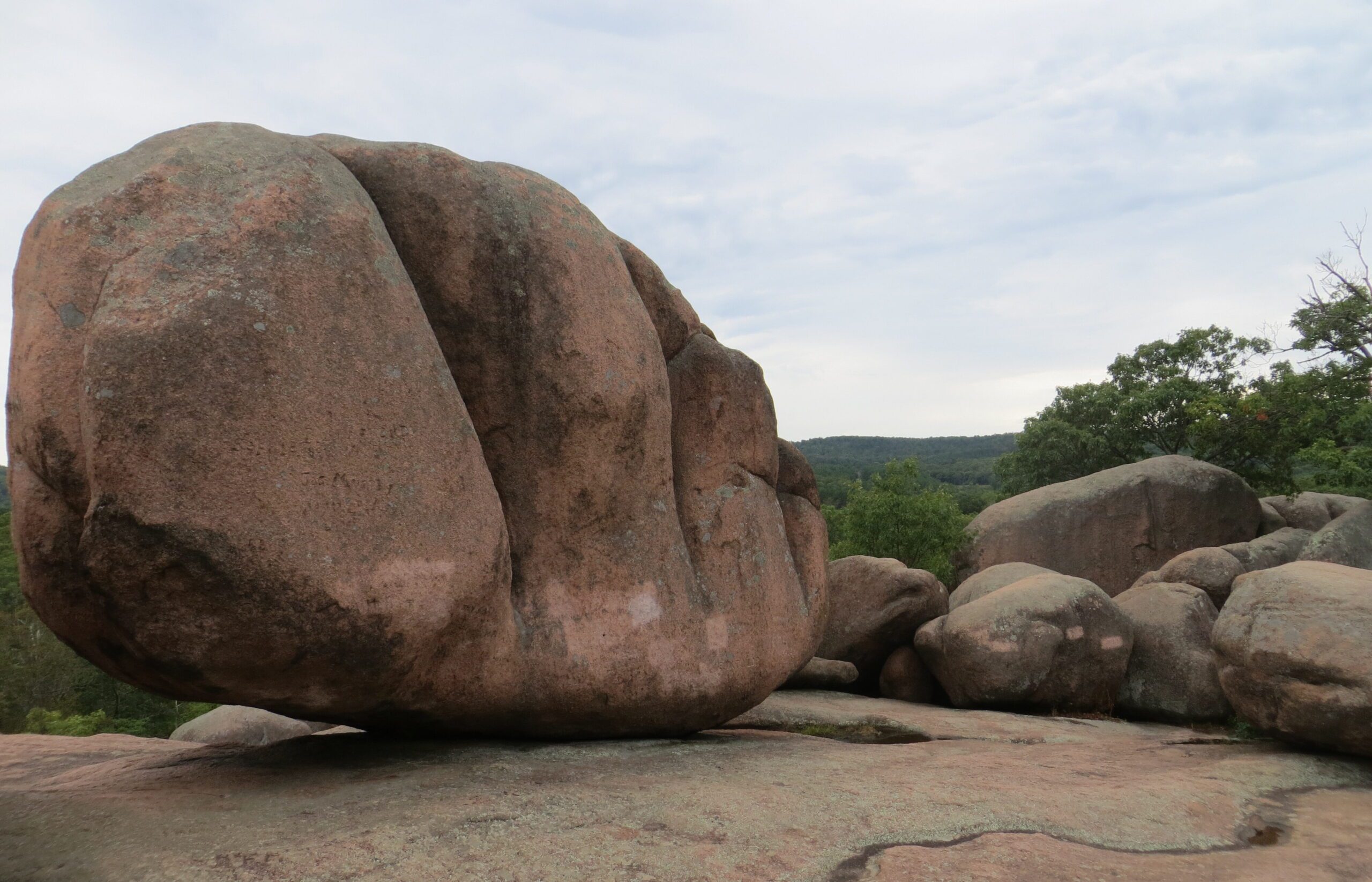
“They invited me to join to board almost immediately,” said Hermanson with a laugh. John and Karl became involved early in the process, and it was through their connection that Hermanson was introduced to Scenic America President Mark Falzone, who helped the Missouri group turn the vision of the Ozark Run into reality.
“Throughout the entire process, I was so impressed by Eric’s persistence,” said Falzone. “Eric was a volunteer. He wasn’t collecting a paycheck for this work. He acted purely on seeing his idea come to life, and he made it happen. He is such a great ambassador for the scenic byways program.”
Hock also spoke highly of Hermanson’s work ethic and dedication throughout the process. “Eric took the reins from the start. Once he knew he had our support, he worked tirelessly to develop the tools and processes that were needed to build the application. It was a huge undertaking, but Eric wasn’t deterred.”
Through the guidance of Scenic America and Scenic Missouri, Hermanson created a corridor management plan for the Ozark Run, as well as a marketing strategy that included a website with maps and photos. The original proposal was submitted to the Missouri Department of Transportation (MODOT) in December 2021.
Before the Ozark Run, Missouri had 13 officially designated scenic routes: two National Scenic Byways, three Federal Agency Byways, seven State Scenic Byways, and one All-American Road. These thoroughfares help contribute to Missouri’s healthy travel and tourism industry, which employs over 300,000 citizens and generate nearly $1.5 billion in state and local tax revenue annually.
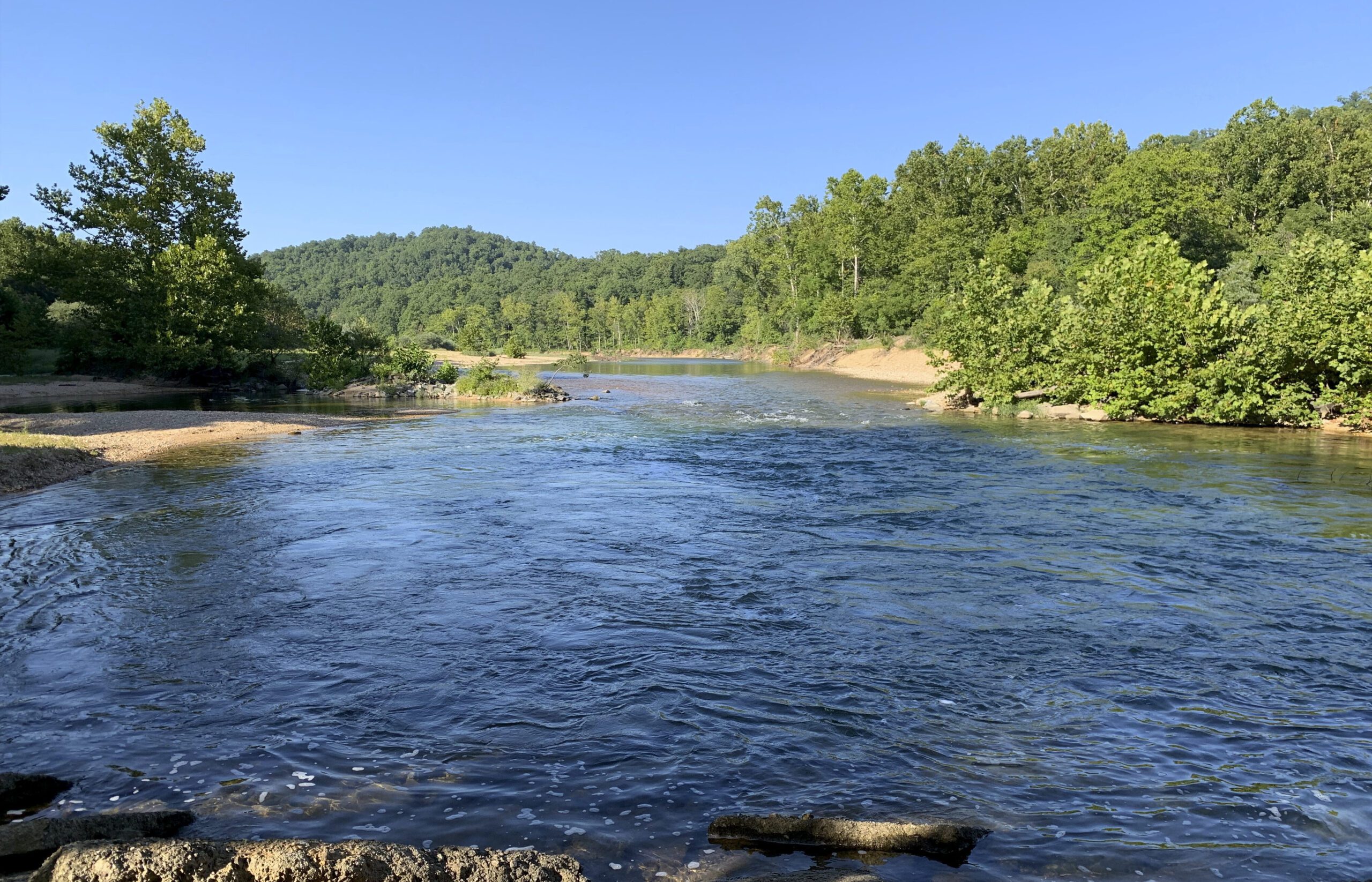
Moreover, the economic impact that the byways can have on gateway communities such as St. Louis and Branson cannot be understated. In 2019, visitors to Missouri’s seven National Parks sites contributed to over $400 million in economic output and supported nearly 5k jobs and $141 million in labor income, with many of these visitors arriving via the state’s scenic byways.
After several months of refinement and revisions, MODOT accepted Hermanson’s proposal in February 2022. The Ozark Run Scenic Byway was one step closer to becoming official. Meetings were scheduled by MODOT to present the proposal to every county along the byway, as required by Missouri law.
Meetings took place in August and September of 2022, and culminated with Iron County and Washington County signing on to become the first two counties to officially endorse the Ozark Run Scenic Byway.
“We lucked out that the two counties that signed on first are next to each other,” laughed Hermanson. He was also quick to mention the support he received from Scenic America, Scenic Missouri, and MODOT.
“There is no way that I could have done this alone. I’ve done a lot of the heavy lifting, driving around taking pictures, putting together the documents, the website. But without the guidance, moral support, encouragement, and network…it would have been really hard to get this done.”
The process was not lost on Falzone, as he described the experience and again praised Hermanson’s dedication throughout. “That’s really the beauty of the byways program. It’s such a grassroots thing that requires local support and buy-in at every level. It’s a lot more complicated of a process than many would think, but Eric was able to get it done.”
“Eric managed this process with a level of skill, excellence, and professionalism that made us all proud, in both Scenic Missouri and Scenic America, to be associated with him and his vision,” said a grateful John Hock.
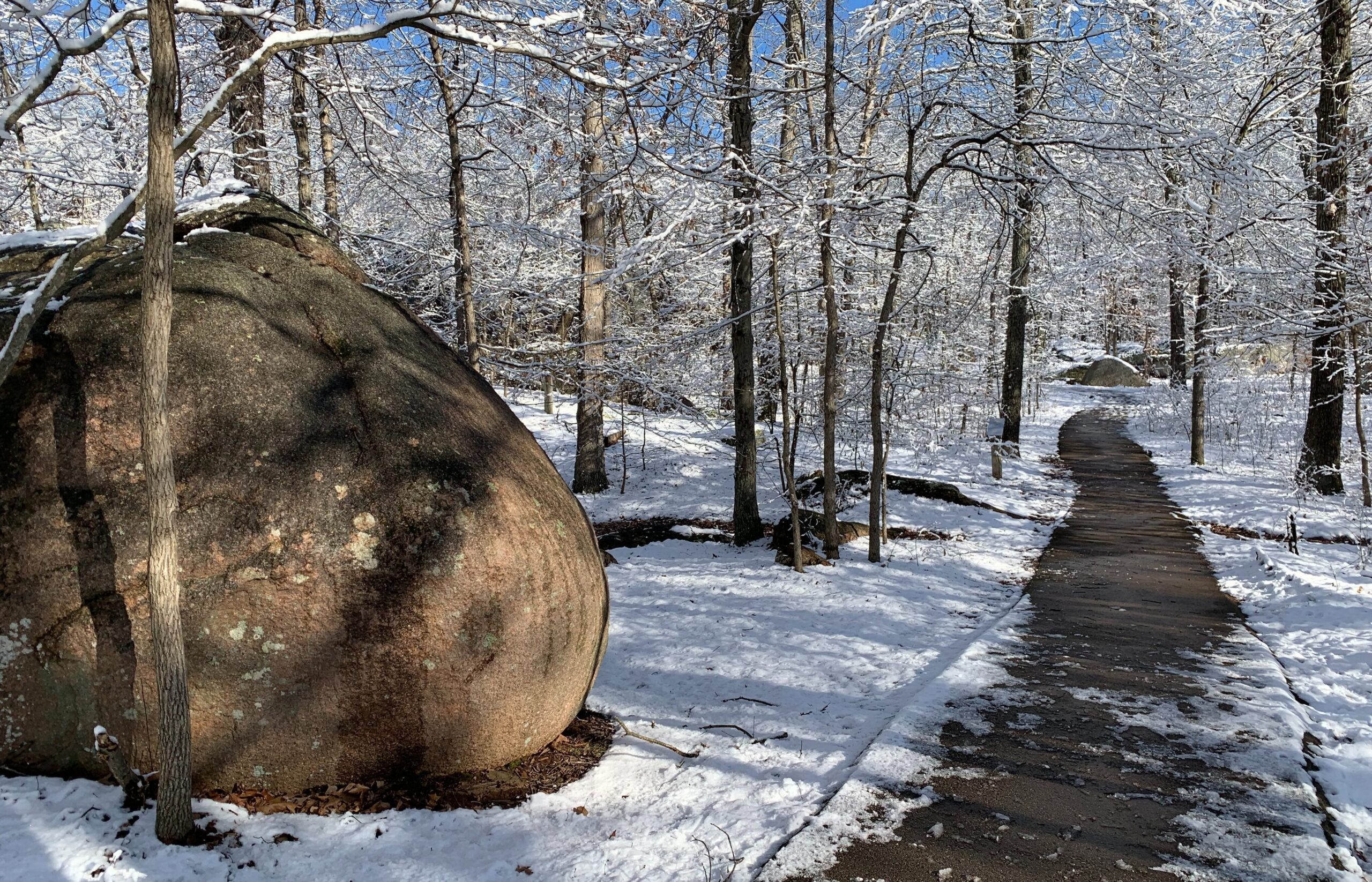
Hermanson will continue to seek support from additional counties and municipalities outside of the scope of the original proposal, further extending the footprint of the Ozark Run. Falzone believes it will happen eventually. “I have no doubt other communities in Missouri will want to be part of the program when they learn of the benefits.”
Those benefits, added Hock, extend beyond the economic impact of travel and tourism. “Even before the economic benefit of a scenic byway, I hope that the Ozark Run will give these communities a renewed sense of pride and an awareness of the importance of preserving and protecting their priceless scenic assets.”
“I see it as a domino effect,” said Hermanson, describing what he hopes to see as the overall impact of the Ozark Run begins to proliferate through the Show-Me State, and it is already happening.
As media coverage of the MODOT meetings in 2022 spread, cities and towns across Missouri began reaching out to Hermanson for inclusion into the program, areas not included in the original proposal. A Phase II of the Ozark Run Scenic Byway is already being planned.
Hermanson is optimistic that things will be much easier the second time through. “The process for designating a scenic byway in Missouri has been around for thirty years, but has sat dormant for twenty. Having already been through this once, we’re excited to get going once again.”
When Phase II of the Ozark Run is approved, the route will grow to a 330-mile network through the Ozark Mountains and surrounding communities.